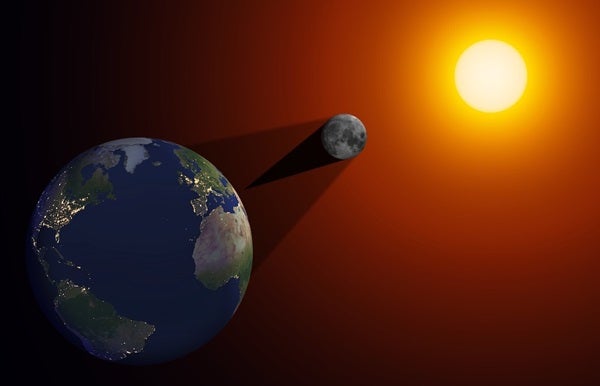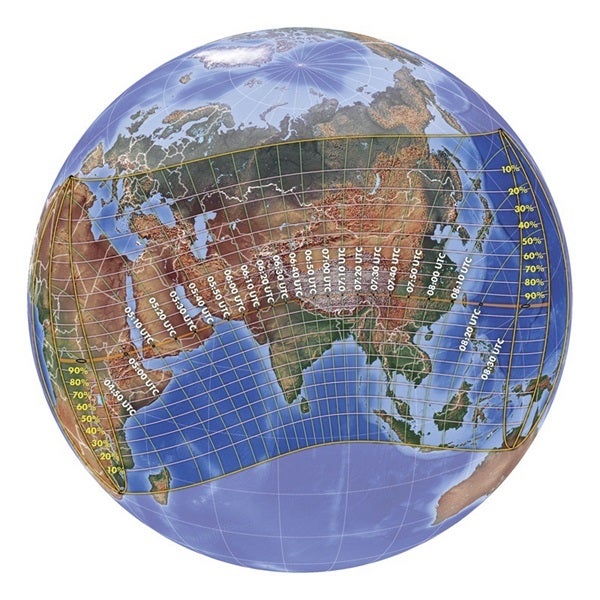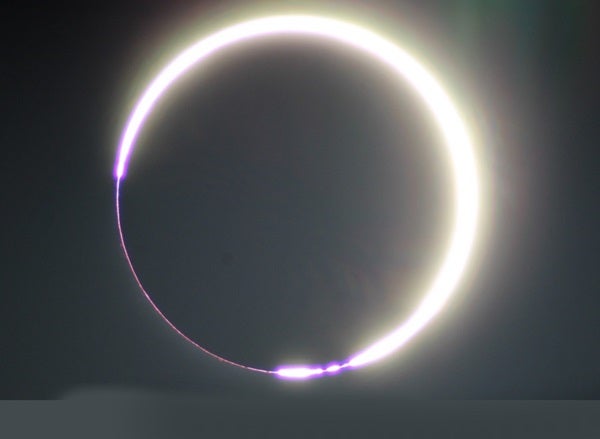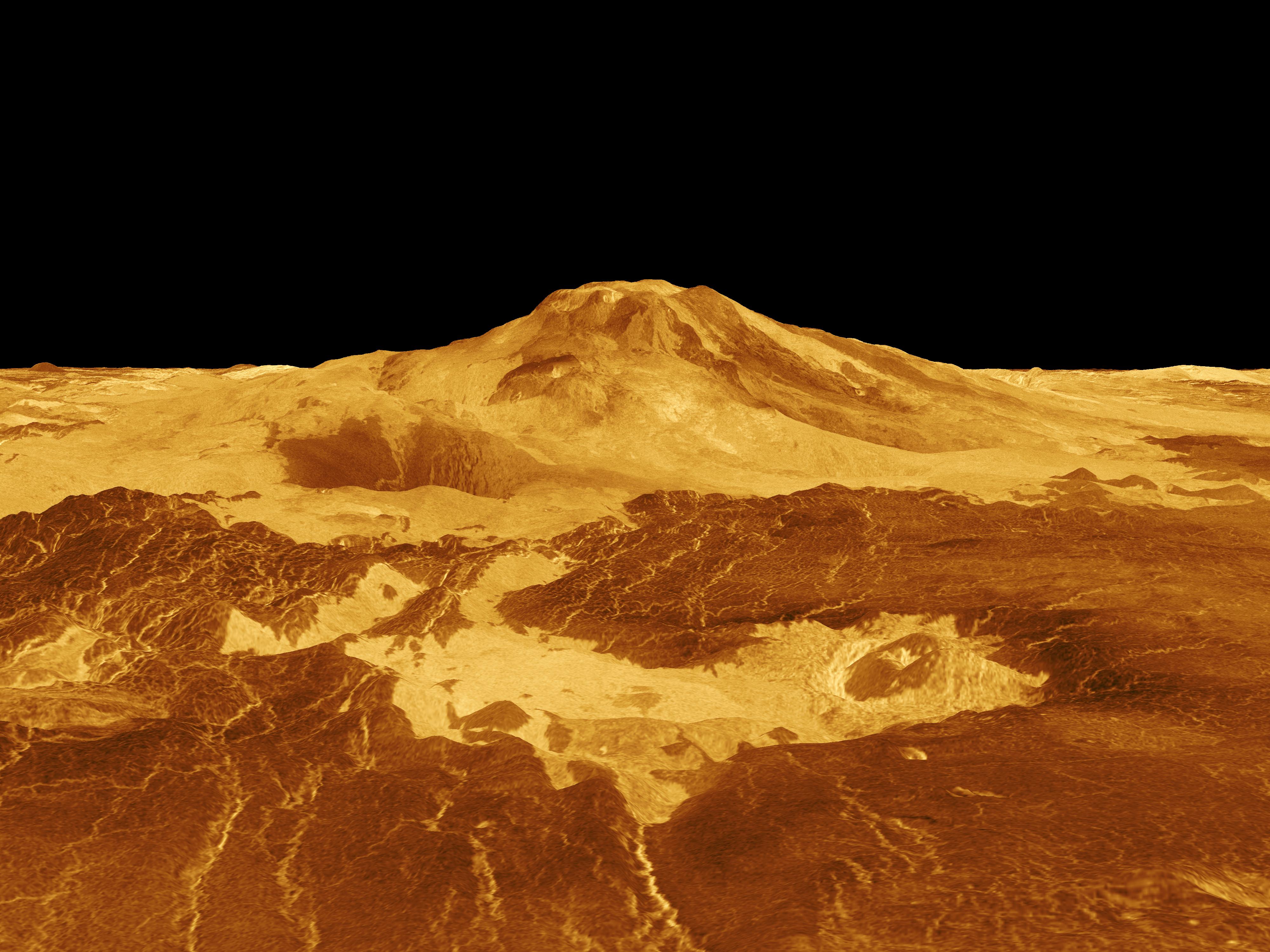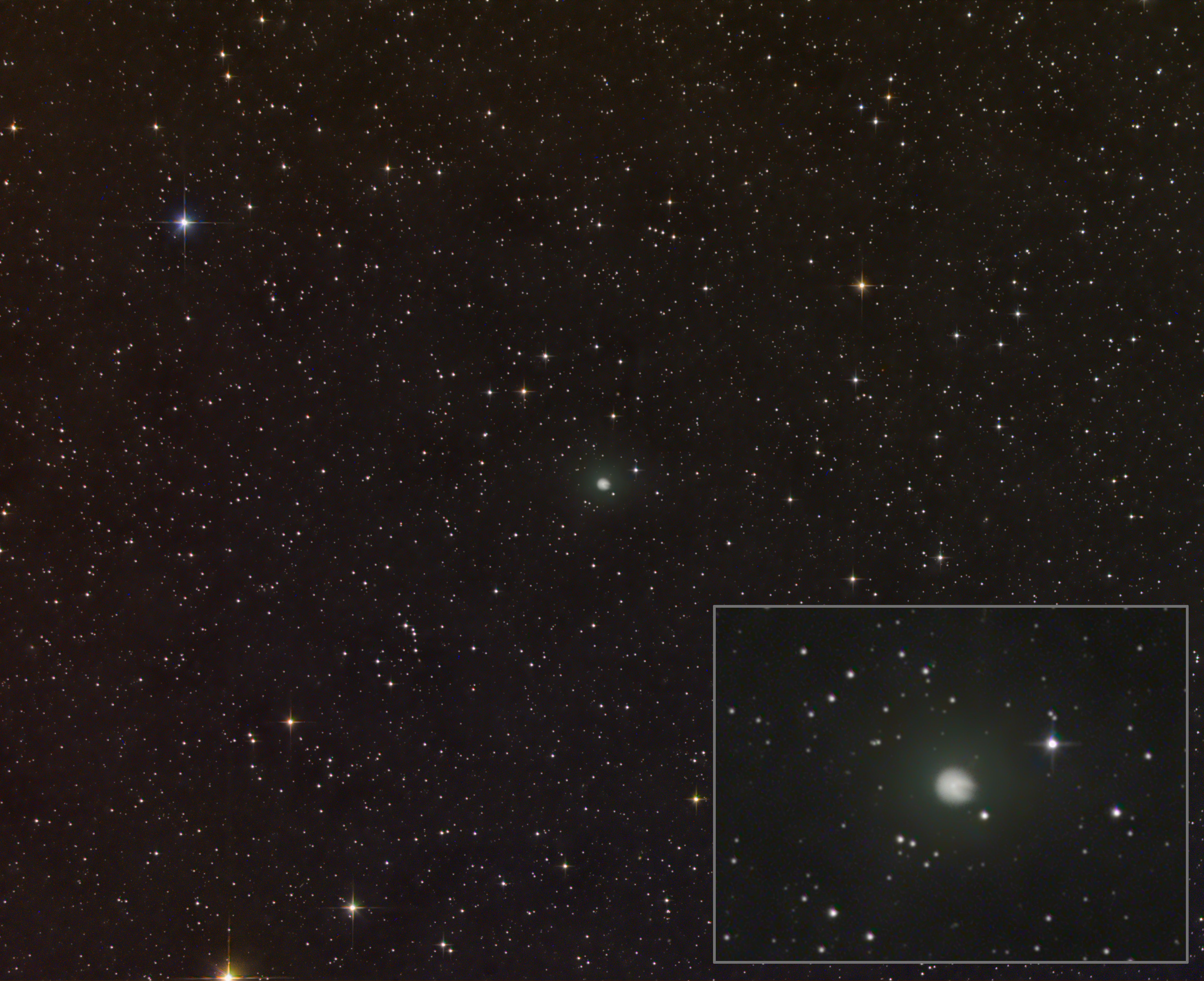The following is a smattering of shots from last June’s annular eclipse, which I monitored into the wee hours of the morning with the help of email, the web, and livestreams from the Middle East and Asia. My decades-long interest in eclipses, and the resulting expeditions I have taken to view them, have allowed me to meet many fascinating people whom I never would have otherwise. And although I don’t keep in constant contact with every one of them, when an eclipse passes overhead anywhere in the world, I have a good chance of hearing from some of my old friends who are eager to share their new pictures.
At the time of this writing, the next solar eclipse to be seen from Earth will be total, with its peak occurring near the border of Argentina and Chile on December 14, 2020. Be sure to keep an eye out for images of December’s total solar eclipse in future issues of Astronomy.
Meanwhile, the next annular eclipse will be on June 10, 2021. Its path will trek from southern Canada over the North Pole and down to the Russian Far East. Observers in the northeastern United States will be happy to learn that partial phases of this annular eclipse will be visible to them in the early morning. So, make sure to get your filtered solar eclipse glasses now, available at MyScienceShop.com.
And don’t forget: Share what you see!
A ringed eclipse
The word annular comes from annulus, which means “ring.” So, when the Moon is just far enough away from Earth that it leaves the outer perimeter of the Sun’s disk unobscured, the result is often referred to as a “ring-of-fire” eclipse. At maximum coverage, this outer band of sunlight is up to a few percent of the solar disk’s diameter. So, technically, it could be called a “ring-of-photosphere” or a “ring-of-sunlight” eclipse.
The term “ring-of-fire” has murky origins dating back at least 150 years, but its modern usage in reference to annular eclipses has been around for at least a few decades, when it started popping up in various publications. However, “ring-of-fire” is somewhat misleading terminology, and it is disliked by many professional and amateur astronomers, or so-called umbraphiles (the umbra is the dark part of a shadow). Contrary to common conception, there is no chemical fire on the Sun. Rather, we owe the warmth and light we receive from the Sun to the clean thermonuclear fusion of hydrogen gas safely occurring some 93 million miles (150 million kilometers) away.
An unfiltered view leads to a revision
The June 21 annular eclipse also traced a path through Pakistan, where the cloud-cover forecast was not as favorable as in the lower Arabian Peninsula. Fortunately, it turned out to be very clear.
From Sukkur — a city in the Pakistani province of Sindh — Talha Moon Zia, who is a research astronomer at Pakistan’s National Center for Big Data and Cloud Computing/NED University of Engineering & Technology, obtained these wonderful unfiltered views of the annular eclipse. The shots were created by stacking several short-exposure images and were taken under the guidance of Michael Kentrianakis, the former project manager of the American Astronomical Society’s 2017 U.S. eclipse efforts and a member of our International Astronomical Union’s (IAU) Working Group on Solar Eclipses.
Our IAU group focuses on being a central resource for anyone looking to find out more about past or upcoming solar eclipses. To do this, we maintain a website at the easiest possible address to remember: eclipses.info. The working group also serves as a clearinghouse for professionals pursuing international eclipse expeditions, coordinating such matters as visas, customs, and the shipping of equipment.
For these images, Zia and Kentrianakis forwent filters in order to capture detailed views of Baily’s beads, which occur when sunlight peeks through valleys along the lunar limb. This allowed them to successfully detect the solar chromosphere, and even the inner solar corona.
Prior imaging of Baily’s beads taken during previous total solar eclipses led to discussions between me, Xavier Jubier, and Ernest T. Wright of NASA’s Scientific Visualization Studio. We concluded that the IAU’s nominal solar diameter — the defined size of the Sun’s photosphere, which is used for predicting the length of eclipse totalities down to a fraction of a second — needed a minor revision. By comparing our observations to simulations by Jubier of the expected Baily’s beads for this eclipse, which were based on high-resolution 3D mapping of the lunar surface obtained by NASA’s Lunar Reconnaissance Orbiter and the Japanese Kaguya mission, we found our suspicions were confirmed.
Zia’s observations, as well as Jubier’s simulations, show the true size of the Sun’s photosphere is slightly larger than previously thought.
Eclipse resources
Many observers who were unable to personally see the annular eclipse dim the skies during the daytime instead opted to monitor images and livestreams of the event aired during the middle of their local night — an option not available to eclipse enthusiasts just a few decades ago.
Now, worldwide communication and online eclipse-mapping tools, like those from Xavier Jubier of France and retired astrophysicist Fred Espenak (EclipseWise.com), provide detailed eclipse data for any location on Earth. Additionally, cartographer Michael Zeiler of New Mexico has meticulously created high-quality eclipse maps, while cloudiness statistics over the decades have been gleaned and put into context by Jay Anderson of Canada. (Anderson and I jointly authored the Peterson Field Guide to Weather, which is being published in summer 2021.)
All of these resources are linked on the website for the International Astronomical Union’s Working Group on Solar Eclipses (http://eclipses.info), which I chair. Additionally, observations of the 75 or so solar eclipses I worked on in the past are posted to the Williams College Eclipse Expeditions website.

